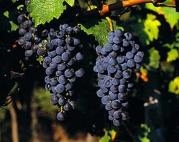|
On The Grapevine, August2010
 The impact of the vineyards climate, soil and landscape, known as ‘terroir’ in French, and the grape varieties grown on the flavors and quality of wine This is the second installment of a series of 3 articles predominately focused on wine education. The first was on the components and structure of wine and the third will focus on tasting wine. This article will discuss the external factors impacting on the vineyard site quality and how specific types of grape varieties produce higher quality wines in certain geographical areas (concentrating on Australian regions).
Terroir Terroir expresses the coming together of climate, soil, and landscape, incorporating the influences of temperature, rainfall, and sunlight; soil depth, structure, acidity, minerals and water retaining capacity; slope, aspect and drainage. It is so important to the French that it lies at the heart of their appellation (classification) system built up over a thousand years of experience and observation which has led
 Whilst Australia, as a relatively young wine nation, is free from the constraints and rigidity of such an appellation system there has been little attempt in the past to correlate specific soil types with grape varieties with more emphasis on climate and landscape to determine the most suitable sites and grape varieties for particular regions. Another critical issue is correct moisture supply
 at critical parts of the growing cycle. There is much debate about the use of irrigation in Australian vineyards on wine quality. Irrigation can be used simply to increase yields in the hotter regions (such as the riverina and riverlands) but used with sophistication it can improve quality and not yields by relieving harmful stress on the vines. This is particularly important in Australia with more climate extremes of heat and rainfall (lack of) in any given year. at critical parts of the growing cycle. There is much debate about the use of irrigation in Australian vineyards on wine quality. Irrigation can be used simply to increase yields in the hotter regions (such as the riverina and riverlands) but used with sophistication it can improve quality and not yields by relieving harmful stress on the vines. This is particularly important in Australia with more climate extremes of heat and rainfall (lack of) in any given year.Why is climate so important? If you look at a map of the world most vineyards lie in a band around 30 to 45 degrees latitude in both hemispheres. The band offers the best balance of sun, rain, heat and cold to allow grapes to grow and ripen sufficiently. The ideal conditions for premium grapes are cold winters so the vine can hibernate and store strength for the following year’s fruit; a long warm summer with some rain so the fruit ripens slowly and evenly; and a dry autumn for harvesting, if grapes take in too much water it dilutes the ripe flavours. If the climate is too hot the grapes can obtain an overstewed flavor which is not uncommon in some our Australian warmer climate wines.
The influence of soil on the resulting wine has been much debated between the new and old World where it is considered much more important. The traditional vineyard adage that the poorer the soil the better the wine arises from the vines need for very well drained soil. Many of the great wines of the world come from relatively infertile stoney soils, where yields are low (2-3 tonne per acre). The soil must be able to retain enough moisture without becoming waterlogged. Warm soils like gravel, sand and loam retain heat which speeds ripening, while cooler soils like clay slows ripening. There is now a move in Australia to focus more on vineyard soil analysis in the selection of sites and grape varieties.
Landscape variations give rise to microclimates that differ to the overall prevailing climate. Slopes which have concentrated sunlight and better drainage are better suited to quality wines than flat lands with highly fertile soils. Slopes that face north in the southern hemisphere receive more sun and are consequently warmer, in hotter climes cooler slopes tend to be cultivated. Altitude also affects temperature and grapes will take longer to ripen and be less stressed in higher cooler vineyards. An example of this in Australia is the Clare Valley SA, although in a very warm latitude its altitude provides cooling relief to slower ripening and therefore produce quality red and white wines.
Luckily for Australia we have many areas with favourable climate, soils and landscape to produce high quality wine grapes (primarily in the southern areas of the continent).
Grape varieties Grapes make up a large diverse plant family but all the classic wine making grapes come from the species vitis vinifera which yields the largest and sweetest fruits. Whilst the grape variety determines the character of any given wine the external factors outlined above and the winemaking will have a significant impact on the overall quality and uniqueness of a particular wine. This is particularly so from single vineyard wines which can differ quite significantly from year to year whereas the larger wineries can blend from different regions to get a more consistent product each year. Both have their place in the industry but I must admit I enjoy the anticipation of the former, albeit not always positive!
I will briefly describe some of the major varieties that produce premium wines in Australia and the geographical regions, which in my opinion, they excel in quality, primarily based on the factors described above.
This is the most well known red grape variety in the world. The grapes are high in tannins so it ages well but also needs time to mature (5-10 years at least). It is often blended with merlot to soften the wines mouth drying tannins. At best the wines are dense in color, aroma and depth with long lingering flavours of blackcurrant and berries. In cooler climates, minty and leafy characters are intermingled with these blackcurrant and red berries. In warmer climates, chocolate and tobacco characters can express themselves. The best regions include Coonawarra and Clare Valley S.A. and Margaret River W.A.
Shiraz, as it is known in Australia, makes dark full bodied red wines with great potential longevity, particularly if oak aged. But with its softer tannins can be made to be consumed at a younger age. It is a lovely food wine. The beauty of Shiraz is that it can flourish in a range of climates and slowly cool climate Shiraz has come into focus. The cooler regions of Central Victoria and South Australia have become known for structured wines that have black cherry, pepper and spice characters rather than the chocolate and stewed plums found in warmer climates. A classic Australian blend is that of Cabernet and Shiraz. Fleshy Shiraz fruit weaves itself into Cabernets framework, producing a wine with fabulous structure and flavour. The best regions include the Barossa, McLaren Vale in SA, Central Victorian regions of Grampians, Pyrenees and Heathcote and the Canberra District NSW. Clearly my favourite variety.
Chardonnay
The most popular white grape variety due to its unfussy temperament and versatility. Wines from this grape are dry and can be light with crisp apple and peach flavours or more full bodied (buttery), particularly if oak aged. The best Chardonnay’s come from Adelaide Hills SA, Margaret River WA and the Mornington Peninsula in Victoria.
Riesling The classic German grape variety makes some very fine wines. They are light in body generally lower in alcohol, yet stongly flavoured and very long lived. They range from bone dry to very sweet. High acidity normally balances any richness. Superb very sweet wines are made from riesling grapes subject to botrytis fungus (noble rot). The best dry Rieslings come from the Clare Valley and Eden Valley in SA and southern regions of WA. |
|
|


